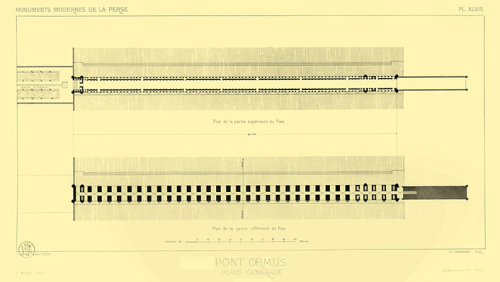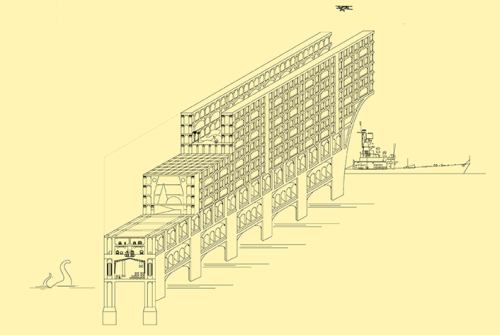genericarchitecture: XXXXXX02 or The Frozen LeviathanMatteo Mannini[Winner of the Gulf Architecture
genericarchitecture: XXXXXX02 or The Frozen LeviathanMatteo Mannini[Winner of the Gulf Architecture Biennal, Hormuz Bridge International Competition, 2014]The legend of the Hormuz Route have been puzzling generations of archaeologists and historians. Poems and chronicles portray it as the “dark” double of the Silk road, channeling the trade of a very specific commodity—workforce—from the deepest recesses of Africa and the central Asiatic uplands towards the strategic outpost of Hormuz. Tales and stories stress the violence through which far regions were plundered, and their young men and women made slaves and traded.Yet, stories from the Slave road were not only characterised by their dark tones. Rather, stories of heroism and resistance, escapes and piracy, desertion and rebellion fuelled the legend of the Hormuz Road. While the Silk Road represented the well-honed order of the Asian Empires, and their capillary territorial control through a network of trade infrastructure made of roads, caravanserais and gardens for water management, the Hormuz Road seemed to nurture manifold forms of life which disrupting such an order: escaped slaves, prostitutes, pirates, charlatans, healers, prophets, venture captains, profiteers and bandits.In the subsequent centuries the land connection between Persia and Arabia lost progressively its importance, and the Hormuz Strait gained prominence as the gate for maritime commerce in the Persian Gulf, especially since the discovery of oil reservoirs since the 1930. Today’s situation is well known: 20 percent of world’s oil transits from the Hormuz strait, and 35% of all oil traded by sea, making the area the world’s most strategically contested geopolitical hotspots. But the perspective of a progressive exhaustion of oil reservoirs in the area and an ever-present threat of escalation of the Middle-Eastern conflicts, threaten the already precarious economic stability of the area. The implementation of a North-South international traffic route would then constitute an occasion for a complete re-configuration of the geopolitical significance of the area, opening new markets and enhancing the resilience trade network across Asia and Africa. -- source link
Tumblr Blog : genericarchitecture.tumblr.com

